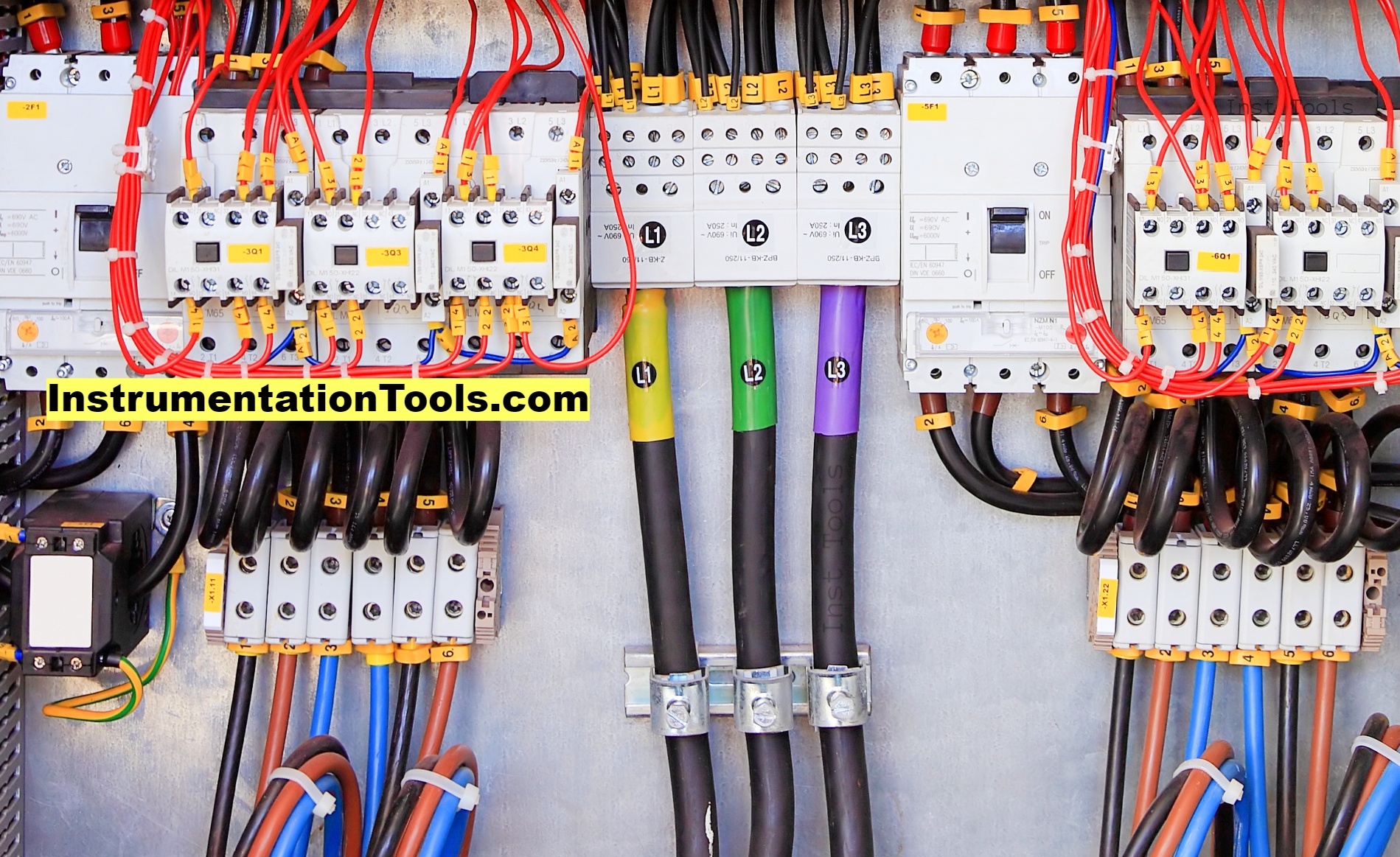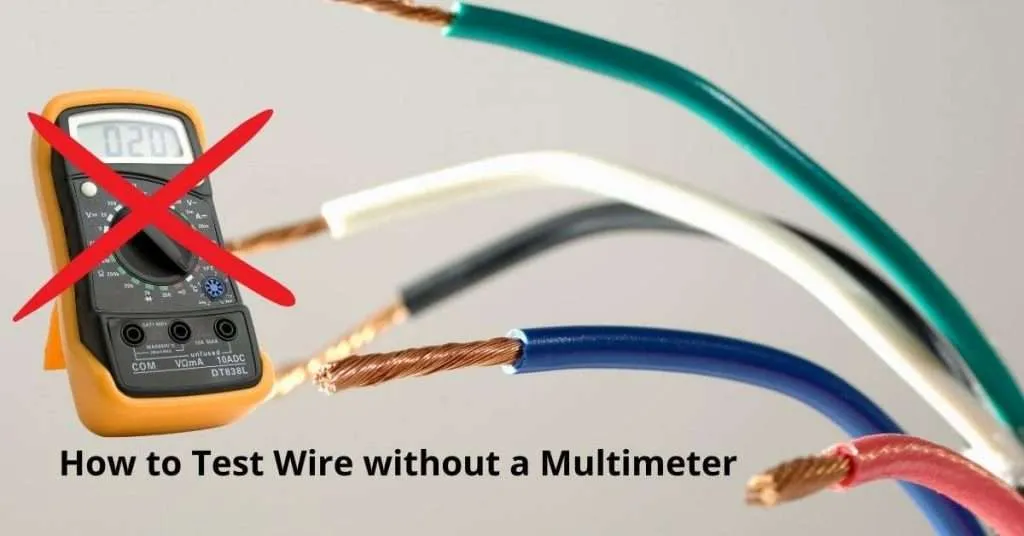Impressive Info About How To Test If A Wire Is Live Or Neutral

How To Identify Hot, Neutral And Ground Wires Using Digital Multimeter
Is That Wire Friendly or Fiery? A Simple Guide to Identifying Live and Neutral Wires
Ever stared at a tangle of wires and wondered which one's got the electricity flowing and which is just... there? It's a common homeowner conundrum! Knowing which wire is live (the one carrying the current) and which is neutral (the return path) is crucial for any electrical work, big or small. Messing it up can lead to a shocking experience, and not the good kind! So, let's demystify this wiring wizardry.
1. Why Bother Identifying Live and Neutral?
Think of it like this: the live wire is the delivery guy bringing the package (electricity), and the neutral wire is the return truck taking the empty boxes away. You wouldn't want to accidentally open the delivery guy's truck and start sorting through packages, would you? Similarly, you need to know which wire is actively carrying the current to avoid electrocution. Plus, proper identification ensures your electrical circuits work safely and efficiently. No one wants flickering lights or appliances that randomly shut off, right?
Working with electricity, even for simple tasks, demands respect. Incorrect wiring can damage your appliances, cause fires, or, worst of all, lead to serious injury. Imagine plugging in your brand-new TV and watching it go up in smoke because the wiring was reversed! Taking the time to correctly identify live and neutral wires is an investment in your safety and the longevity of your electrical equipment.
Before you even think about touching a wire, remember this golden rule: safety first! Always turn off the power at the circuit breaker before you start any electrical work. I know it sounds obvious, but you'd be surprised how many people skip this crucial step. It's like putting on your seatbelt before driving — a simple precaution that can save you a lot of grief.
And if you ever feel unsure about what you're doing, don't hesitate to call a qualified electrician. They're the pros, and they have the tools and knowledge to handle any electrical situation safely. There's no shame in admitting you need help. Electricity is not something to mess with if you're not comfortable.

What Is Live Neutral And Earth Wiring Work
Tools of the Trade
Alright, so you're ready to tackle this electrical identification mission. But before you go all MacGyver on your wiring, you'll need the right tools. Don't worry, you won't need a Swiss Army knife (although, those are pretty cool). Here's what you'll need for a safe and accurate identification:
2. Must-Have Tools for Wire Testing
First and foremost, a non-contact voltage tester. This little gadget is your best friend when it comes to detecting live wires without actually touching them. It works by sensing the electromagnetic field around a live wire and will usually light up or beep to alert you. It's like a sixth sense for electricity! Make sure you test it on a known live circuit before you start working to ensure it's functioning correctly.
Next, you'll need a multimeter. While the non-contact voltage tester tells you if a wire is live, the multimeter allows you to measure the voltage between different points in the circuit. This is useful for confirming that the neutral wire is indeed at or near zero volts. Think of it as the electrical detective, gathering clues to solve the mystery of the wires. A good multimeter is an invaluable tool for any homeowner who likes to dabble in DIY electrical projects.
Of course, you'll also need some basic tools like a screwdriver (insulated, please!) to open electrical boxes and access the wires. And don't forget safety glasses! Protecting your eyes is always a good idea, especially when working with electricity. Think of it as your electrical safety superhero costume — safety glasses, insulated screwdriver, and a healthy dose of caution!
Finally, a reliable flashlight can be a lifesaver, especially when working in dimly lit areas. Trying to identify wires in the dark is like trying to find a needle in a haystack. Good lighting ensures you can see what you're doing and avoid any accidental missteps. Plus, a flashlight can also help you spot any potential hazards like frayed wires or loose connections.

Earth Wire Explained At Joy Herman Blog
The Non-Contact Voltage Tester
This little device is a game-changer when it comes to electrical safety. Seriously, if you're doing any electrical work, you need one of these. It's like having a personal electrical bodyguard.
3. How to Use a Non-Contact Voltage Tester
Using a non-contact voltage tester is super simple. First, make sure the circuit is energized (turned on at the breaker). Then, simply hold the tip of the tester near the wire you want to test. If the tester detects voltage, it will usually light up or beep. If it doesn't detect voltage, the wire is likely not live (but always double-check!). Remember to test both the live and neutral wires to confirm your results.
Now, before you get all confident and start waving the tester around like a magic wand, remember that it's not foolproof. Non-contact voltage testers can sometimes give false readings due to electromagnetic interference or other factors. That's why it's important to use it in conjunction with other testing methods, like a multimeter, to confirm your results.
Think of the non-contact voltage tester as your first line of defense. It gives you a quick and easy way to check if a wire is live before you touch it. But it's not a substitute for proper electrical knowledge and safety precautions. Always double-check your work and never take shortcuts when it comes to electricity.
Remember, even if the non-contact voltage tester doesn't detect voltage, it's always a good idea to treat the wire as if it were live until you've confirmed otherwise with a multimeter. It's better to be safe than sorry when dealing with electricity. And if you're ever unsure about what you're doing, don't hesitate to call a qualified electrician.

How To Test Wire Without A Multimeter Ultimate Guide (2023)
The Multimeter Method
While the non-contact voltage tester is great for a quick check, the multimeter lets you get down to the nitty-gritty (okay, maybe not nitty-gritty, but close!) and actually measure the voltage.
4. Voltage Measurement Techniques with a Multimeter
Set your multimeter to the AC voltage setting (usually marked with a "V~"). Then, carefully touch one probe to the wire you suspect is live and the other probe to the neutral wire. If you're in North America, you should get a reading of around 120 volts. If you're in Europe or other countries, it will likely be around 230 volts. The wire that gives you this reading is the live wire, and the other one is (hopefully) the neutral wire.
To further confirm, touch one probe to the neutral wire and the other probe to a known ground (like a metal water pipe). You should get a reading of near zero volts. If you get a significant voltage reading, it means the neutral wire might not be properly grounded, which is a safety hazard. Time to call an electrician!
Multimeters can be a little intimidating at first, but they're actually quite easy to use once you get the hang of it. There are tons of online tutorials and videos that can walk you through the basics. Just remember to read the instructions carefully and always use caution when working with electricity. Treat your multimeter like a valuable tool — because it is!
And again, I can't stress this enough: if you're not comfortable using a multimeter, don't risk it. Call a qualified electrician. Electricity is not something to take lightly, and it's always better to err on the side of caution. Your safety is worth more than any DIY project.

How To Identify Neutral Wire With Multimeter YouTube
Color Coding
In many countries, electrical wires are color-coded to help identify their function. However, it's important to remember that color coding isn't always consistent, and sometimes, previous DIYers might have taken liberties with the wiring. So, while it's a helpful hint, it's not a definitive answer.
5. Decoding the Wire Colors
In North America, the typical color code is: black for live, white for neutral, and green or bare copper for ground. However, it's not uncommon to find variations, especially in older homes. For example, sometimes a white wire is used as a live wire, which can be very confusing (and dangerous!). That's why it's crucial to always test the wires, even if they appear to be correctly color-coded.
In Europe, the color code is different: brown or black for live, blue for neutral, and green/yellow for ground. Again, it's important to check the specific regulations in your country and not rely solely on color coding.
Think of color coding as a helpful suggestion, but not a guarantee. It's like reading a weather forecast — it gives you an idea of what to expect, but you should still look out the window to see what's actually happening. Always verify the function of each wire with a non-contact voltage tester and a multimeter.
And here's a pro tip: if you're working on a circuit where the wiring is all wonky and the colors are all messed up, take the time to label each wire with masking tape and a marker before you disconnect anything. This will save you a lot of headaches (and potential electrical shocks) later on. It's like creating a wiring roadmap so you don't get lost in the electrical wilderness.

How To Test If An Electrical Wire Is Live AB & Communications
FAQ
6. Q
A: Reversing the live and neutral wires can be dangerous and can cause appliances to malfunction or even become a shock hazard. Some appliances may still "work," but the outer metal casing could become energized, posing a risk of electrocution if touched. In short, don't do it!
7. Q
A: You need the power on to test the wires, but be extremely careful! Use a non-contact voltage tester first to identify live wires before using a multimeter. Always follow safety precautions and wear appropriate safety gear. If you're not comfortable working with live circuits, call an electrician.
8. Q
A: It's possible that your non-contact voltage tester is picking up stray electromagnetic fields. Try moving to a different location or turning off other electrical devices nearby. If the beeping persists, the tester might be faulty. Test it on a known live circuit to verify it's working correctly. And as always, double-check with a multimeter to confirm the wire is actually de-energized.